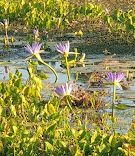Avenue of the Baobabs, Madagascar
Main Article Content:
Deep in the heart of western Madagascar lies one of the planet’s most surreal and enchanting landscapes — the Avenue of the Baobabs. This stunning corridor of ancient Grandidier’s baobab trees lines a dusty road between Morondava and Belo Tsiribihina, capturing the imagination of all who visit.
The Avenue is home to dozens of towering baobabs, some standing over 30 meters high and believed to be more than 1,000 years old. These massive trees are often referred to as "upside-down trees" because their thick branches resemble roots stretching toward the sky. Their unique appearance has earned them legendary status, both in Malagasy folklore and among global travelers.
🌟 A Living Legacy of Time and Myth
According to Malagasy legend, the baobab once stood proudly above all trees, boasting about its beauty. The gods, angered by its arrogance, are said to have planted it upside down to humble it — giving it the root-like canopy it’s known for today. Whether myth or not, the Avenue feels like something out of a dream, with its prehistoric trees forming a natural colonnade along the red earth road.
Many of these trees are sacred to local communities. Some are even used for spiritual offerings, celebrations, or quiet reflection. They're not just trees — they’re part of the region’s soul.
🌺 Nature’s Miracle of Survival
Baobab trees are uniquely adapted to their environment. Their massive trunks act like sponges, storing thousands of liters of water to survive Madagascar’s long dry seasons. Their bark can regenerate even if stripped, and their fruit — often called “monkey bread” — is rich in vitamin C, calcium, potassium, and is considered a modern superfood.
At night, their large, white flowers bloom and are pollinated by fruit bats, continuing a life cycle that’s as magical as it is ancient. The trees also provide food, shelter, and nesting places for birds, lemurs, lizards, and insects — forming a complete micro-ecosystem in their shadow.
📷 A Photographer’s Paradise
The best time to visit the Avenue of the Baobabs is during sunrise or sunset, when the warm light casts dramatic shadows and the orange hues of the earth and sky blend beautifully. This time of day is known as the "golden hour," and it's when photographers from around the world come to capture the magical light dancing across the trees.
Despite its beauty and popularity, the Avenue is not part of a formal park. There are no gates, no tickets, and no walls — just nature in its rawest, most powerful form. That adds to the sense of freedom and adventure.
🛣️ How to Get There
Located around 45 minutes north of Morondava, the Avenue is accessible via a bumpy road journey that adds to the sense of exploration. The surrounding villages are welcoming, and visiting the nearby Baobab Amoureux — two intertwined baobabs said to represent eternal love — is also recommended.
🔥 Why You Should Visit
-
See some of the oldest and tallest baobabs on Earth
-
Experience a unique and spiritual landscape
-
Capture world-class photos during golden hour
-
Learn about Madagascar’s rich culture and biodiversity
-
Support eco-tourism and local conservation efforts


